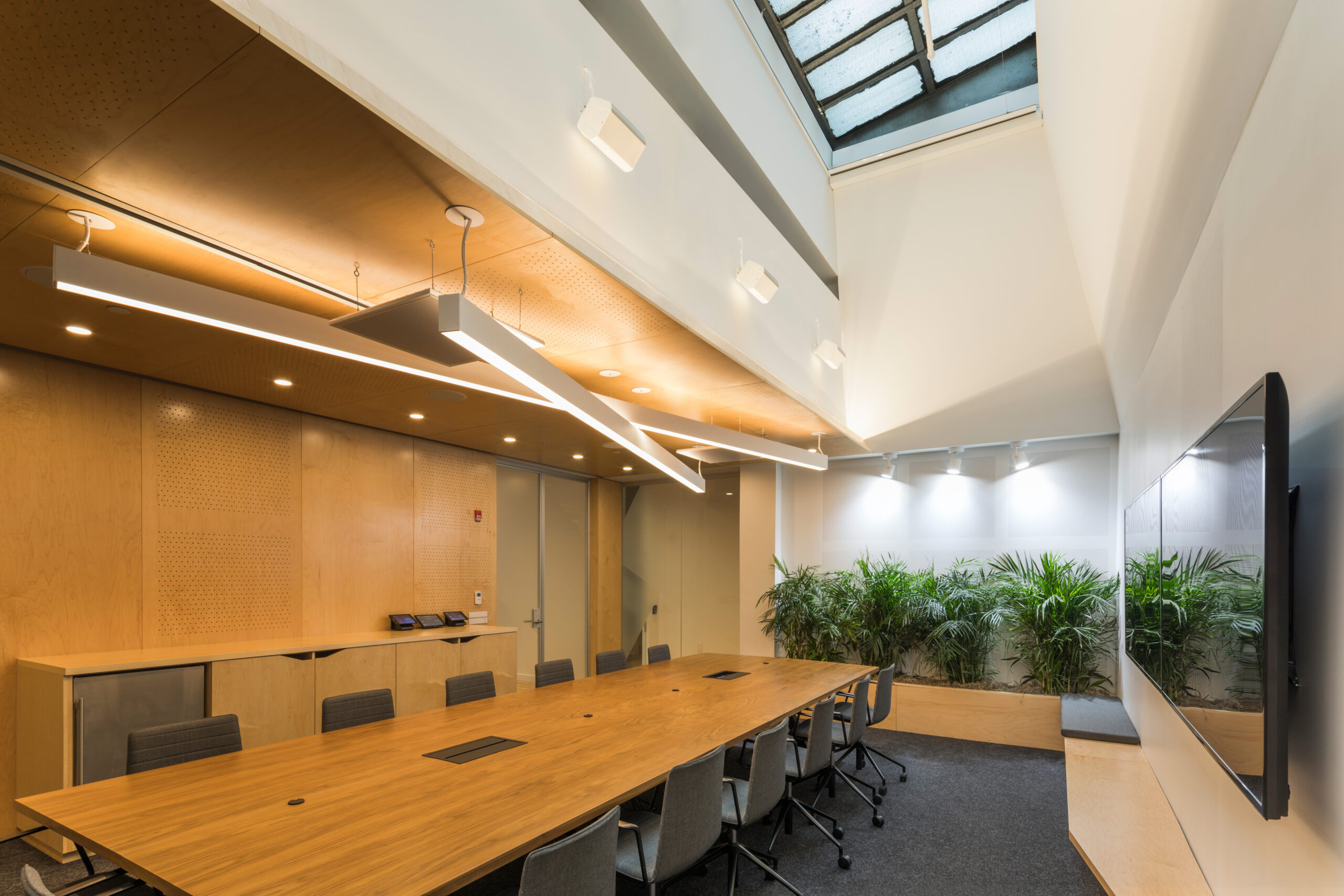Evelyn Lee is a Start-up Advisor in the Tech Space, Angel Investor, Founder of Practice of Architecture, and Host of the podcast Practice Disrupted. She is a prominent speaker on architectural practice evolution, technology integration, and diversity in AI, dedicated to guiding the profession into new horizons.
I previously shared my thoughts on why architects struggle with the business aspect of their practice. Although I contemplated immediately discussing how significant it is to have a business plan, I realized that I needed to include a crucial step: The importance of intentionally crafting a comprehensive and compelling mission, vision and values statement.
I have known many firm leaders who started their firms with big ideas on how they would do things differently, only to find what they built was similar to the culture they hoped to leave behind.
Why?
They jumped straight into the doing without taking the time to articulate their ideal culture through their mission, vision and values statements.
I don’t know about you, but I need help remembering any mission, vision or values statement from previous architecture firms I worked for. Can you?

Slack NYC Headquarters by Snøhetta, New York City, New York
However, my experience at Slack has been quite different. The mission, vision and values are intricately woven into the company’s fabric and are regularly referenced and reinforced. They are:
- Used during the candidate selection process.
- Introduced at employee onboarding.
- Integrated into how we communicate with one another on Slack the tool; emoji use included.
- Reinforced at every company all-hands.
- Present in our regular pulse surveys.
- In employee recognition programs.
- Are a critical part of the management and performance reviews.
- Showcased regularly in the product update notes as well as social media channels.
And before the pandemic, when we were in the office:
- Appeared on the in-room meeting displays as the screensaver, a constant reminder of how Empathy, Courtesy, Thriving, Craftsmanship, Playfulness and Solidarity plays out in meeting behavior.

Slack Toronto Office by Dubbeldam Architecture + Design, Toronto, Canada
Individuals want to work with organizations whose missions and business philosophies resonate intellectually and emotionally with them.
This is increasingly important as Gen Z looks for purposeful workplaces and leans into creating a values-based teaching and learning culture within a firm. (For more on this, see my earlier article about changing the culture of architecture).
So what are the business outcomes? According to a survey of over 540 employees worldwide by PwC’s strategy consulting business, Strategy&, found that companies with solid mission and values statements are more likely to be successful than those without.
Additional tangible outcomes from developing a strong mission, vision, and values statement for a company include providing:
- Clarity and focus: A strong mission statement defines the company’s purpose and gives employees a clear understanding of what they are working towards. This can help to improve focus and efficiency.
- Motivation and engagement: A strong vision statement can inspire employees and give them a sense of purpose. This can lead to increased motivation and engagement.
- Alignment: A strong values statement helps align employees and stakeholders around a standard set of beliefs. This helps create a more cohesive and productive work environment.
- Decision-making: A strong mission, vision, and values statement can guide decision-making. This helps ensure that decisions are made in line with the company’s overall goals and objectives.
- Attraction and retention of talent: A strong mission, vision, and values statement can help attract and retain top talent because employees are more likely to want to work for a company they believe in and share their values.
- Brand reputation: A strong mission, vision and values statement can help to improve the company’s brand reputation. This demonstrates to customers, partners and other stakeholders that the company is committed to its mission and values.
So how do you go about crafting each?
Mission Statement

The LeBron James Innovation Center at Nike World Headquarters by Olson Kundig, Beaverton, Oregon (also pictured at top of article).
There is no one-size-fits-all formula for crafting a strong mission statement, but there are some common elements that most effective mission statements share.
- Start with a verb. The first word of your mission statement should be a verb that describes what your company does. For example, “to inspire,” “to empower,” or “to innovate.”
- Describe your target audience. Who are you serving with your products or services? Be specific about who your customers are and what they need.
- State your unique value proposition. What makes your company different from the competition? What value do you offer that no one else does?
- Be aspirational. Your mission statement should be something that you aspire to achieve. It should be something that inspires and motivates your employees and stakeholders.
- Keep it concise. Your mission statement should be short and to the point. It should be something that can be easily remembered and understood.
Here are some examples of mission statements that follow this formula:
- Google: “To organize the world’s information and make it universally accessible and useful.”
- Apple: “To create the best products and services on earth and leave the world better than we found it.”
- Nike: “To bring inspiration and innovation to every athlete in the world.”
- Tesla: “To accelerate the world’s transition to sustainable energy.”
- Starbucks: “To inspire and nurture the human spirit — one person, one cup and one neighborhood at a time.”
Vision Statement

Facebook HQ by Studio O+A, Palo Alto, California
A vision statement is a declaration of what you want your company to achieve in the future. It is a long-term goal that your company aspires to reach. A good vision statement is clear, concise and inspiring. It should be something that your employees and stakeholders can rally behind.
- Start with your mission statement. Your vision statement should be aligned with your mission statement. They should both be working towards the same goal.
- Be ambitious. Your vision statement should be something that your company strives to achieve. It should be challenging but also achievable.
- Be specific. Your vision statement should be clear enough that people can understand what you are trying to achieve. But it should also be general enough to adapt as your company grows and changes.
- Be inspiring. Your vision statement should inspire and motivate your employees and stakeholders. It should give them a sense of purpose and excitement about your company’s future.
- Be memorable. Your vision statement should be memorable so that people will remember it long after they have read it.
Here are some examples of good vision statements:
- Google: “To organize the world’s information and make it universally accessible and useful.”
- Apple: “To be the most innovative company in the world.”
- Nike: “To be the world’s leading sports brand.”
- Tesla: “To accelerate the world’s transition to sustainable energy.”
- Starbucks: “To be the premier purveyor of the finest coffee in the world.”
Values

Tesla Santa Monica Showroom Façade by Arktura LLC, Santa Monica, California
Company values are a concise declaration of core principles that guide an organization and ultimately inform its culture. They define what the organization believes in and how people are expected to behave — with one another, with customers and vendors, and with other stakeholders.
Here are some tips on how to create good company values:
- Start with your mission and vision. Your company values should be aligned with your mission and vision statements. They should all be working towards the same goal.
- Brainstorm with your team. Get input from your employees, stakeholders, and customers. This will help ensure your values are relevant and meaningful to everyone involved.
- Make sure they are specific. Your values should be specific behaviors or actions that your company believes in. For example, instead of saying “integrity,” you could say “honesty,” “transparency” and “accountability.”
- Make sure they are consistent. Your values should be reflected in your company’s culture, policies and practices. This means that you should hire people who share your values and reward and promote those who uphold those values.
- Make sure they are authentic. Your values should be genuine and believable. If you don’t live your values, your employees and stakeholders will see right through you.
- Make sure they are memorable. Your values should be easy to remember and understand. This will help your employees and stakeholders to live them in their day-to-day work.
Finally, make sure you:
- Be willing to adapt your values over time. Your values may also need to change as your company grows and changes.
- Communicate your values to your employees and stakeholders. Ensure everyone in your organization knows your values and how they are expected to live them.
- Live your values. The best way to get your employees and stakeholders to believe in your values is to live them yourself.
If you want additional support for crafting or revisiting your company’s mission, vision, and values, check out Practice of Architecture’s Guide for Creating Purpose-Driven Mission, Vision and Value statements.
Architects: Want to have your project featured? Showcase your work by uploading projects to Architizer and sign up for our inspirational newsletters.




